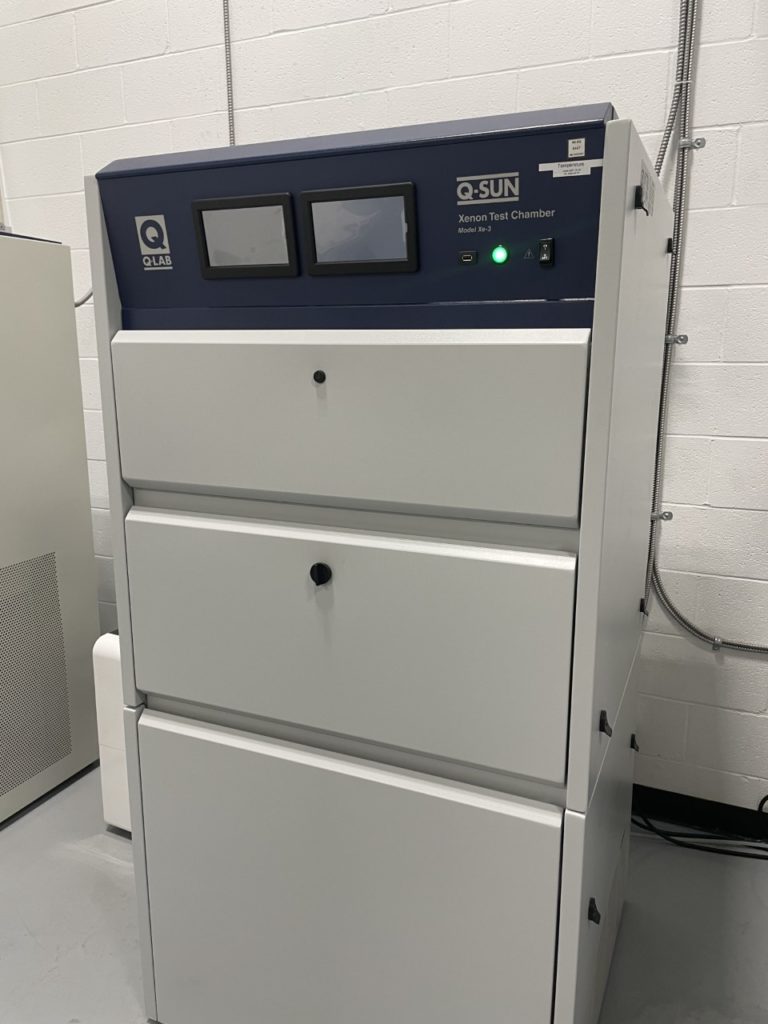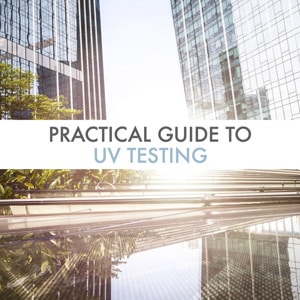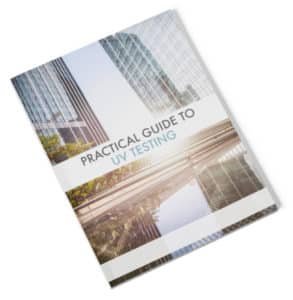ASTM D2565
Standard Practice for Xenon-Arc Exposure of Plastics Intended for Outdoor Applications
ASTM D2565 is a standard practice for xenon-arc exposure of plastics intended for outdoor applications. This practice covers specific procedures and test conditions based on related testing practices of ASTM G151 and ASTM G155. ASTM D2565 also covers the preparation of test specimens, test conditions best suited for plastics, a well as the evaluation of test results. Micom Laboratories offers the ASTM D2565 test as part of the UV testing services.

Uses and Factors to Be Considered
Polymers can have their mechanical, electrical and optical properties significantly altered when exposed to outdoor conditions such as ultraviolet radiations, heat, and water. The ASTM D2565 test method is intended to induce and replicate these property changes associated with the end-use conditions, including the effects of daylight, moisture, and heat. Note: depending on the actual use conditions, other accelerated aging phenomena might also be considered including salt water, temperature and humidity cycling, ozone, and many others.
Pigments used to color the plastics are different in chemical composition. When materials are offered in different colors, these colors should also be tested.
Typical Experimental Parameters
To perform a relevant accelerated weathering test to ASTM D2565 that is right for your application the following test parameters need to be defined carefully:
- Lamp filters (inner and outer)
- The lamp irradiance level
- The type and duration of moisture exposure
- The duration of the light exposure
- The cabinet temperature during light exposure
- The temperature of moisture exposure
- The timing of a light/dark cycle.
Other Test Methods Related to ASTM D2565
For additional test methods related to ASTM D2565 we invite you to read our resources on Xenon arc testing, Weather-Ometer®️* testing, QUV testing, polymer testing and coating testing.
If you have any questions about ASTM D2565 test or if you would like to speak to a material testing professional, we invite you to contact our material testing laboratory today. It will be our pleasure to answer your questions.
We also invite you to download our PDF on the true color measurement: What is the difference between the “true” color of an item and its “perceived” color (by the human eye)?
We also invite you to download our brochure to learn more about our Paint, Coating and Polymer testing services.
*Weather-Ometer®️ is a registered trademark of Atlas Material Testing Technology LLC
Practical UV Testing Guide
Sunlight exposure can have harmful impacts on carbon-based
materials such as coatings, polymers, textiles, and many others.
Learn more about our in-laboratory UV testing process in this guide.



 A free eBook to help you better safeguard your products from UV damage.
A free eBook to help you better safeguard your products from UV damage.